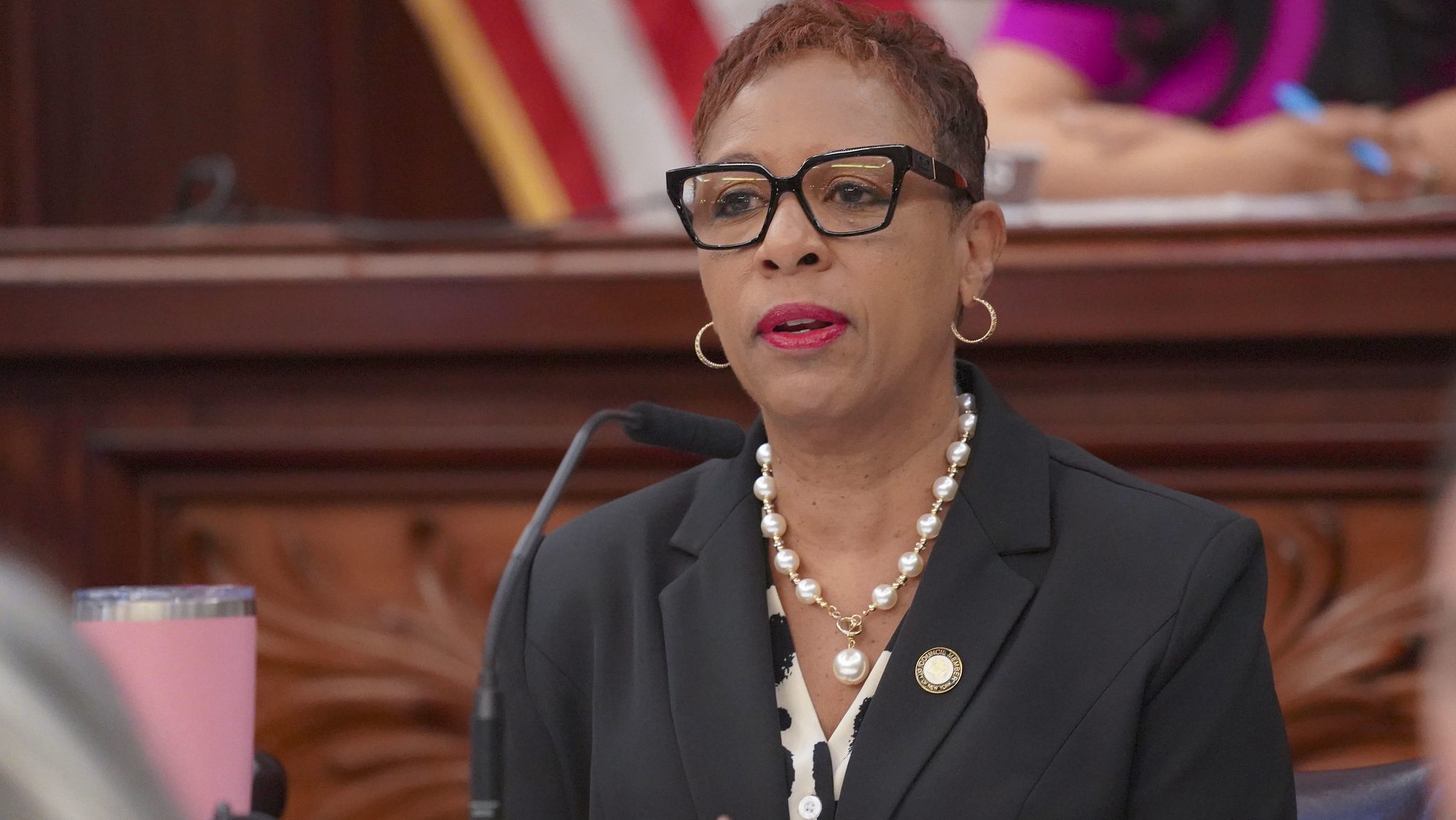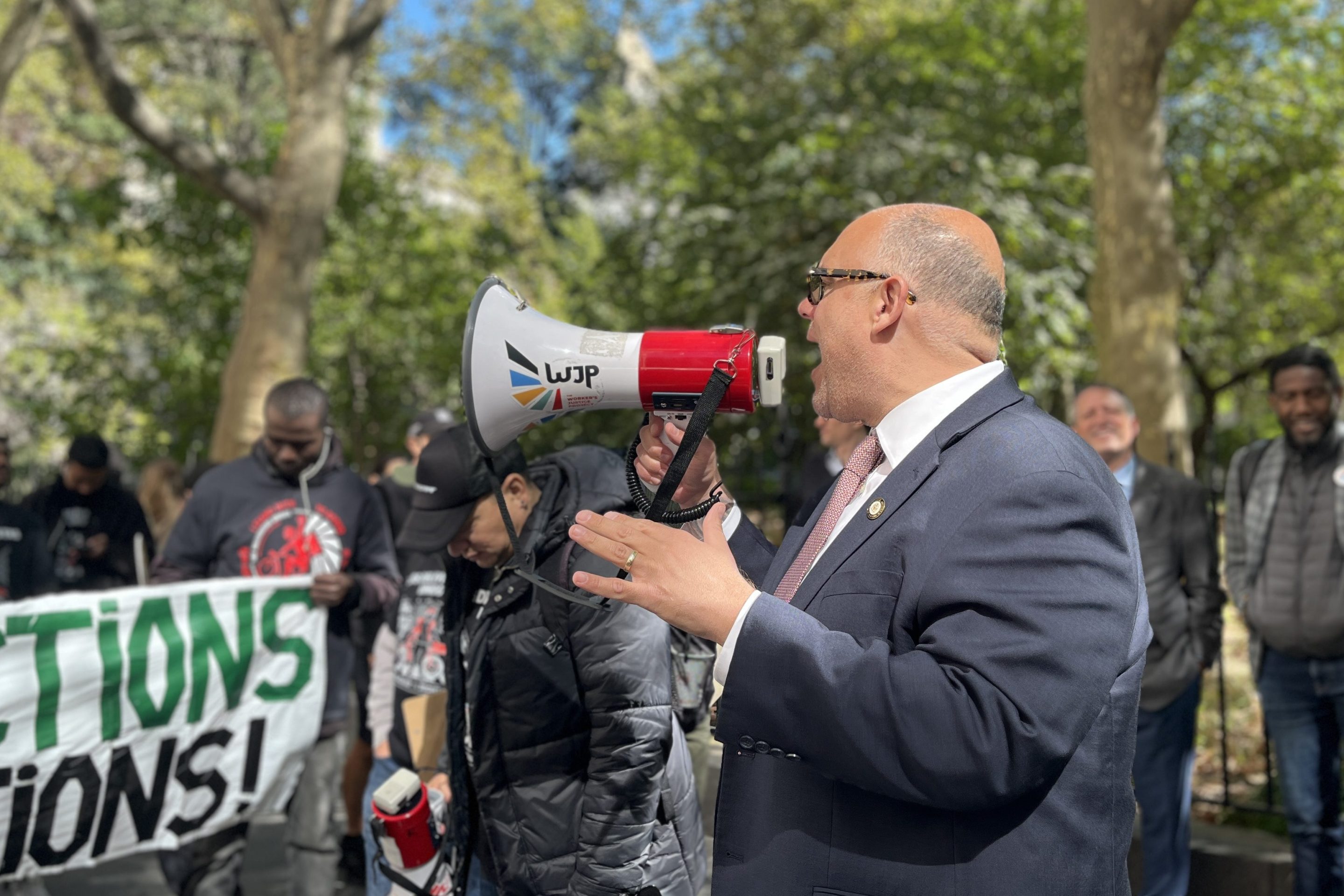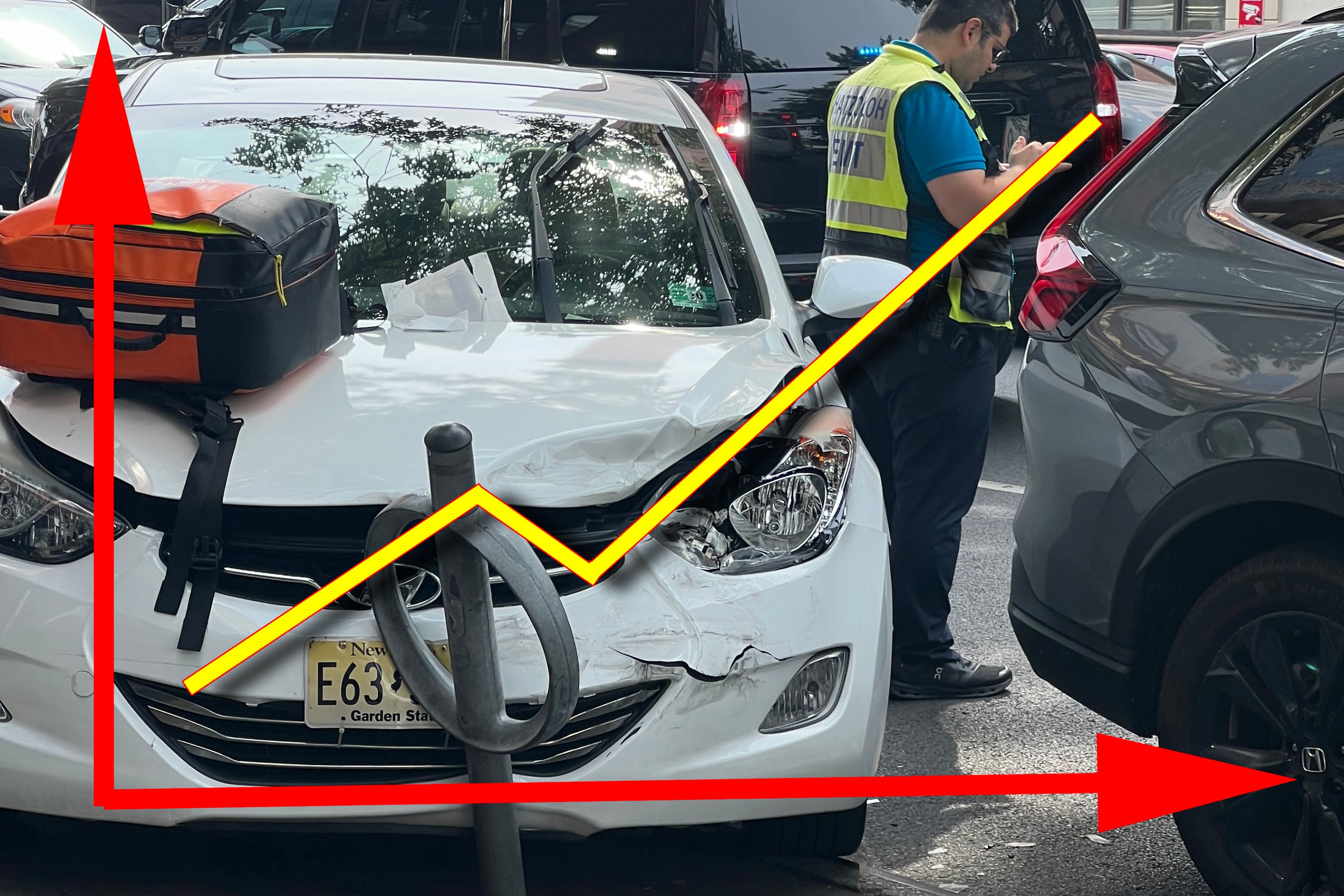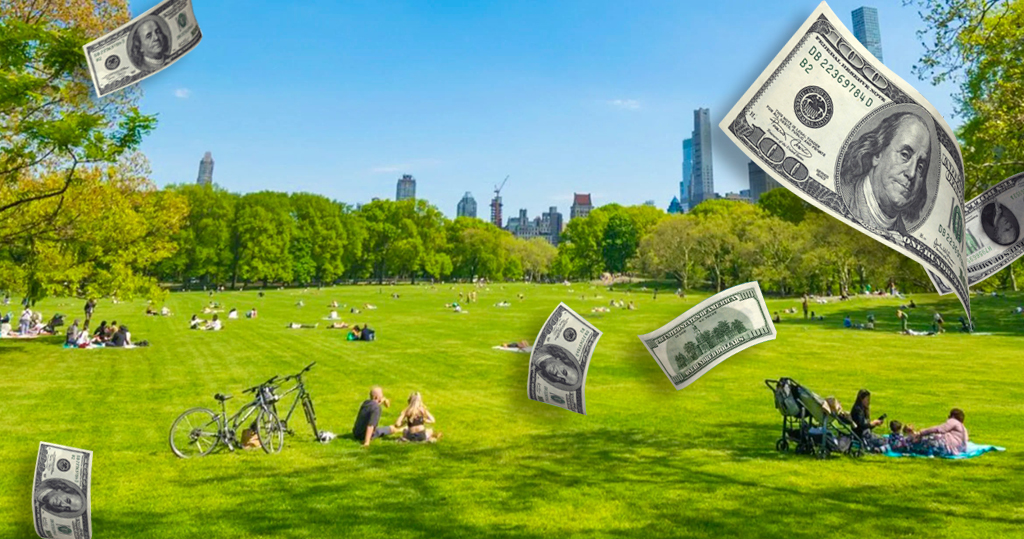The city plans to install a parking-protected bike lane on nearly 40 blocks of 10th Avenue from Chelsea to Hells Kitchen next year, finally bringing a safer street design to the highway-like thoroughfare on the West Side.
Manhattan's Community Board 4 Transportation committee unanimously voted in favor of the proposal, stretching between W. 14th and W. 52nd streets, but the panel pushed Department of Transportation officials to go further and add more physical barriers to shield cyclists and walkers from cars.
DOT's proposal includes a parking-protected bike lane with pedestrian islands at crosswalks, creating both a dedicated space for cyclists and shortening the crossings for pedestrians of the 60-to-70-foot-wide avenue.
The agency will repurpose one of four travel lanes between W. 14th and W. 23rd streets and between W. 42nd and W.52nd streets for the bike lane.
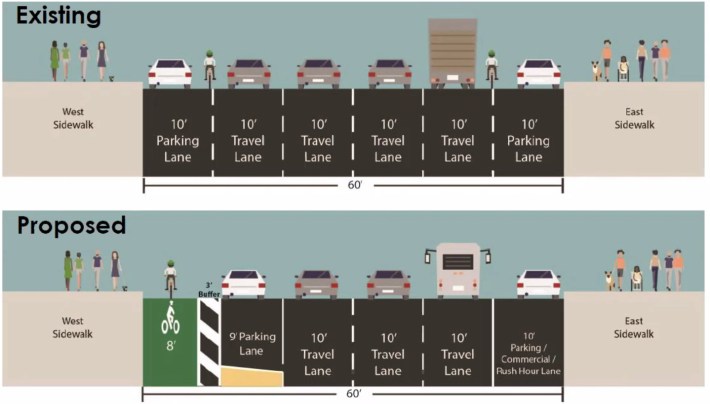
But for 19 blocks in the middle of the project area — between W. 23rd and W. 42nd streets — the roadway gets 10 feet wider and officials will add in the bicycle path while tightening the four existing car lanes without removing any of them.

At three intersections where there's a particularly high number of drivers turning — at W. 27th, W. 41st, and W. 42nd — DOT will install concrete refuges with new signals to give pedestrians a head start — and officials may harden more islands at busy junctions depending on city resources, agency rep Patrick Kennedy told the CB4 committee Wednesday night.
"We’re trying to prioritize the resources that we have in the spots where they’ll be most effective," he said, adding that DOT is looking at other busy cross streets like 23rd or 34th streets for more concrete islands.
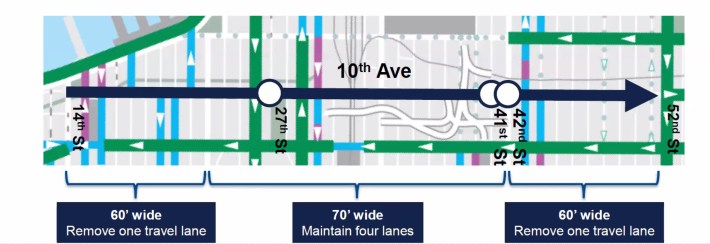
Committee members said the agency should beef up the pedestrian islands, which at most intersections will be paint with plastic flappers, and that they should consider adding the delineating sticks to the bike lane buffer to keep drivers from blocking the paths.
"We do want vertical protection and concrete islands, at a minimum," said committee co-chair Christine Berthet.
Another member of the civic panel said that painted pedestrian islands alone don't feel protected enough.
"It feels unsafe on a painted pedestrian island, so the whole benefit of reducing the crossing distance across an avenue goes away when a lot of pedestrians are worried in that island," said Brett Firfer.
Many drivers in the area ignore painted markings, including cops ostensibly tasked with enforcing them, so even some light plastic demarcations could discourage scofflaw behavior, said another panelist.
"I know that a flex post is not actually much protection against a 7,000-pound SUV, but it is just — even psychologically — it just makes the lanes look safer and I think it makes everyone sort of behave, and there's less plausible deniability from the motorists breaking the rules," said Charles Todd.
Kennedy punted on the drivers blocking the lanes, saying that was an "enforcement issue." The painted buffers will only be only three feet wide, so it would block people getting in and out of cars, the official added, but Todd cited Eighth Avenue, where DOT has put up the posts in the buffer.
"It really is life-changing on Eighth Avenue, it’s night and day the way it feels safety-wise," Todd said.
The city has been dramatically redesigning nearby Eighth and Ninth Avenue in recent years, expanding the sidewalk to accommodate the crush of crowds that spilled over into the bike lanes there.
DOT revamped Eighth between Madison Square Garden and W. 51st Street from a five-lane disaster into two lanes, creating a much wider pedestrian space.
On Ninth, the agency and the Department of Design and Construction have also been overhauling the four-lane roadway between W. 34th and W. 59th streets, cutting one of the car lanes to allow for a wider sidewalk. Those changes are slated to wrap this month, according to an April presentation.
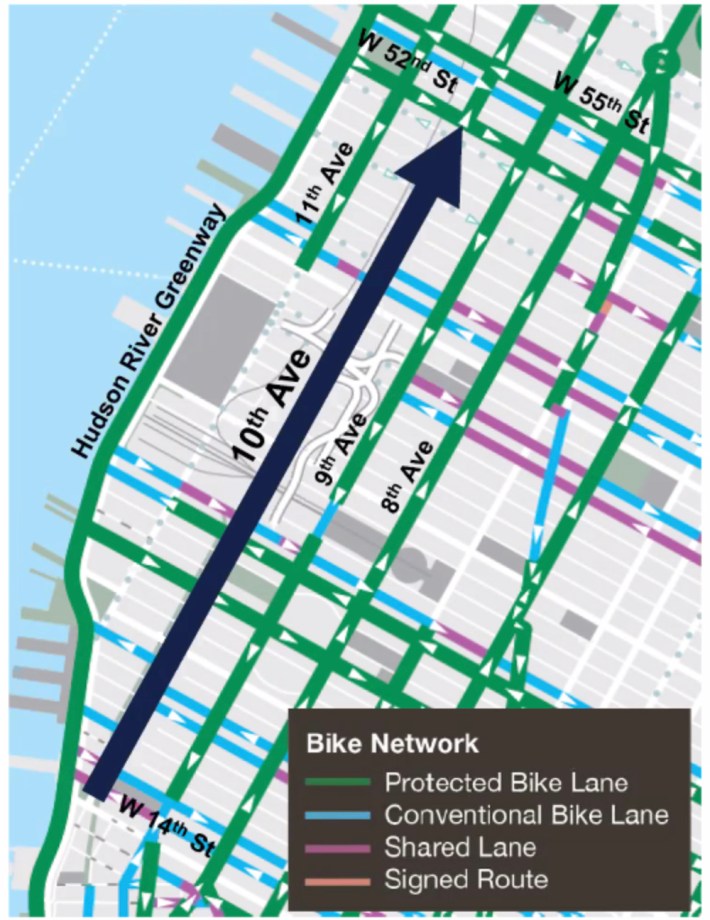
The 10th Avenue proposal comes nine months after safe street activists and local Council Member Erik Bottcher demanded the city focus its redesign efforts on 10th and 11th avenues — two huge roadways cutting through Manhattan's West Side with a lot of traffic heading to the Lincoln Tunnel and through an area that has boomed with residential and commercial development.
Bottcher's District 3 ranked worst for air pollution and seventh for the most traffic fatalities out of all 51 city council districts.
So far this year, the 38-block stretch of 10th Avenue that the city will overhaul has had 173 crashes — nearly four a week — injuring 40 people, including 21 motorists, 12 pedestrians, and seven cyclists. Three pedestrians have been killed since 2016.
DOT aims to start work next spring and wrap up by the summer or the fall. The changes were first reported in amNY.


